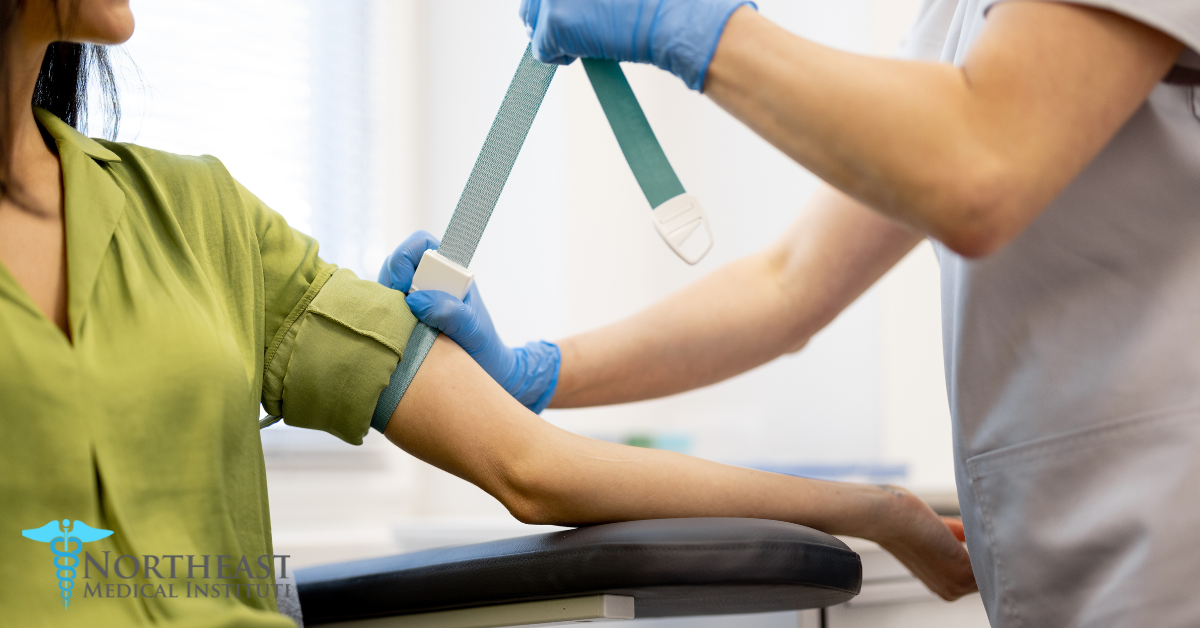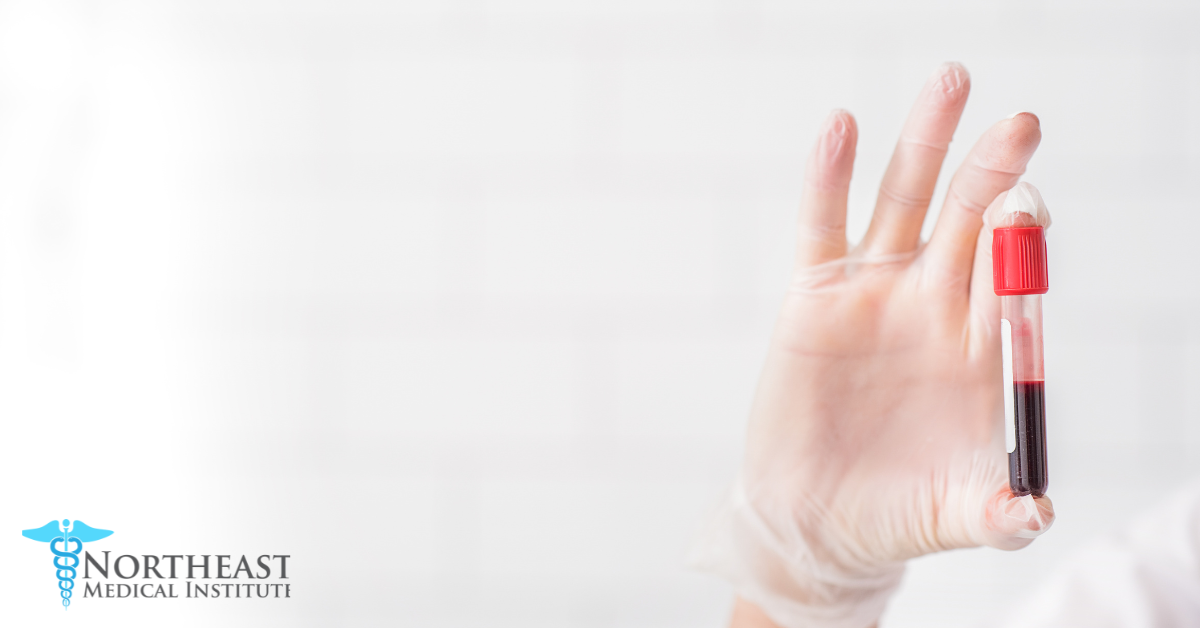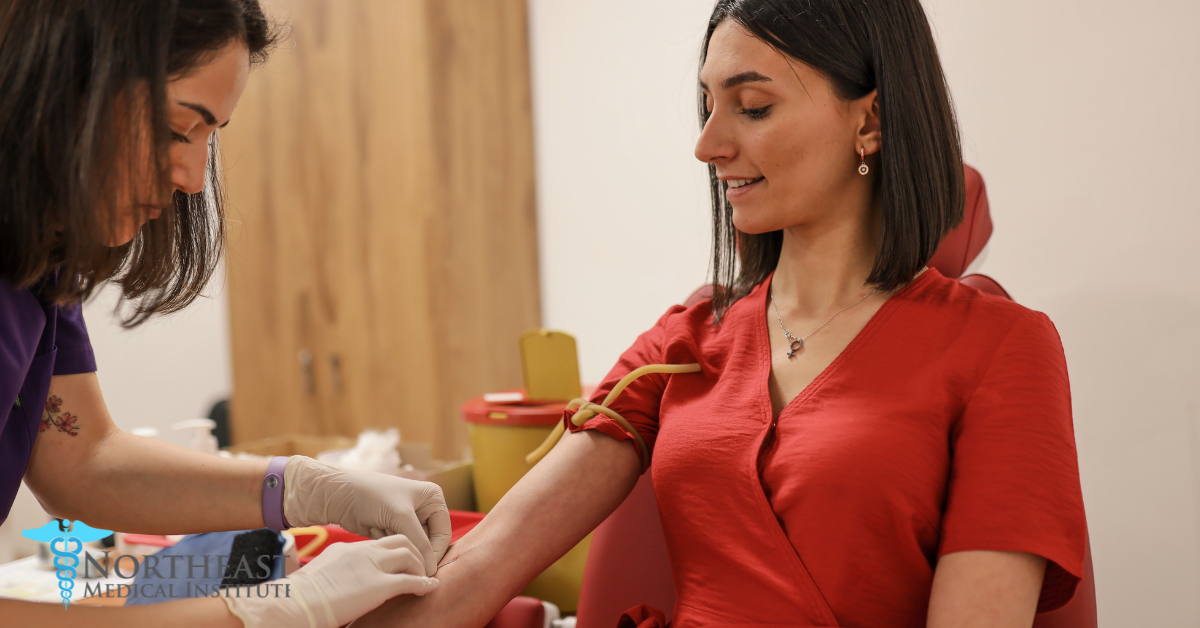What is a Phlebotomist? Duties, Salary, and Training in 2023
The healthcare industry continually evolves, presenting numerous opportunities for individuals who wish to make a meaningful impact on patients’ lives. One such opportunity is the rewarding career of a phlebotomist. But, what is a phlebotomist? These medical professionals play a crucial role in the diagnostic process, ensuring the accurate collection of blood samples for testing and donation. What does it take to become a phlebotomist, and what can you expect in terms of job outlook and salary? Let’s find out!
Join us as we explore the exciting world of phlebotomy, delving into the essential skills required for success, the various work settings, and the steps to become a certified phlebotomist. In this comprehensive guide, we’ll also discuss the factors influencing salary, job growth projections, and the potential for career advancement in this dynamic field. Are you ready to embark on a fulfilling career as a phlebotomist? Let’s begin!
Key Takeaways
- Phlebotomists are medical professionals responsible for collecting and preparing blood samples, providing patient care, collaborating with other healthcare staff, and updating records.
- To become a certified phlebotomist one must complete an accredited program and pass an exam from a recognized organization. Essential skills include technical proficiency as well as interpersonal ones such as empathy.
- Phlebotomy has high job growth projections with competitive salary potential that can be influenced by factors like employer or experience level. Career advancement is possible through certifications or Education.
Understanding the Role of a Phlebotomist
Phlebotomists, as key medical professionals, take charge of:
- Collecting and preparing blood samples for laboratory testing and donation
- Drawing blood from patients, ensuring patient comfort and safety throughout the process
- Working closely with physicians and other healthcare professionals
- Playing an essential role in the diagnosis and monitoring of various medical conditions.
Besides drawing blood, phlebotomists may also handle:
- Patient information collection
- Medical records updating
- Paperwork completion
- Vial labeling
- Providing assistance to patients to ease their apprehension during the blood collection process
They must be well-versed in safety precautions to avoid potential injuries, especially when performing blood tests. With their meticulous attention to detail and compassionate approach to patient care, phlebotomists contribute significantly to the overall healthcare experience.
Blood Collection and Testing
Phlebotomists are experts at drawing blood, preparing samples for analysis, and offering support to patients who might be anxious about needles. In some cases, phlebotomists in nursing homes may also be trained to perform blood transfusions under the supervision of a medical professional. During a blood draw, safety protocols are of paramount importance to avoid direct contact with blood and prevent the transmission of infectious diseases, such as HIV and hepatitis.
The blood collection process, which involves getting blood drawn and the need to collect blood, typically includes the blood drawing procedure the following steps, ensuring slow blood flow is not an issue:
- Introduce oneself to the patient
- Properly identify the patient
- Wash hands
- Apply a tourniquet
- Disinfect the area with an alcohol swab
- Locate a vein
- Insert a needle
- Collect the blood sample
- Release the tourniquet
- Remove the needle
- Dispose of the needle in a biohazard container.
Misidentification or contamination of a blood sample can have far-reaching consequences. Medical professionals rely on accurate blood test results to diagnose and monitor patient treatments.
Patient Care and Support
A key part of a phlebotomist’s role lies in delivering patient care and support. Working in various settings, from outpatient care centers including community health centers, phlebotomists play a vital role in ensuring patients feel comfortable and at ease during the blood collection process. They offer comfort, address concerns, and provide reassurance to patients who may be apprehensive about needles.
Phlebotomists collaborate with medical professionals like physicians and nurses to ensure a smooth and empathetic patient experience. By accurately labeling blood samples, maintaining comprehensive patient and lab records, and ensuring patient safety during the blood collection process, phlebotomists contribute to the high-quality healthcare experience that patients expect and deserve.
Phlebotomist Work Settings
Healthcare settings like hospitals, clinics, clinical laboratories, doctor’s offices, and blood donation centers employ phlebotomists. Their versatile skill set allows them to work seamlessly within different medical environments, collaborating with a diverse range of healthcare professionals to provide essential diagnostic services.
Physical requirements and work schedules may vary depending on the setting, but most phlebotomists work full-time, with those employed in hospitals and laboratories potentially working nights, weekends, and holidays. Regardless of their workplace, phlebotomists play a key role in ensuring accurate and prompt blood sample collection, thereby enhancing patient outcomes and the overall efficiency of healthcare.
Hospitals and Medical Facilities
Phlebotomists in hospitals and medical facilities work together with physicians and other healthcare professionals to gather blood samples for tests. Their role extends beyond blood collection, as they also ensure proper labeling and documentation of draw blood samples, as well as providing assistance with other clinical procedures when needed.
Phlebotomists are essential members of the healthcare team, providing important diagnostic information that informs treatment decisions and patient care. Working in tandem with other medical professionals in hospitals and medical facilities, phlebotomists help to make the diagnostic process more efficient and contribute to an effective healthcare system.
Blood Donation Centers and Drives
At blood donation centers and drives, phlebotomists play a critical role in assisting donors and ensuring the safe collection and secure storage of blood. They may travel to various locations to do blood draws and establish mobile donation centers, providing essential services to communities in need of blood donations.
The role of a phlebotomist in a blood donation center involves:
- Facilitating the blood donation process
- Screening donors
- Collecting blood samples
- Performing automated collection procedures
By ensuring the safe, efficient, and compassionate collection of blood donations, phlebotomists contribute to the lifesaving efforts of blood banks and healthcare organizations worldwide.
Phlebotomy Training and Certification
One must complete the following steps to become a phlebotomist:
- Obtain a high school diploma or its equivalent, with courses in health sciences, chemistry, biology, and anatomy providing a solid foundation for entry into a phlebotomy program.
- Enroll in an accredited phlebotomy program, which typically consists of coursework and hands-on training.
- Complete the program, which covers topics such as daily duties, blood collection techniques, labelling and storing blood, applicable standards and codes, and patient safety.
- Gain certification from a recognized organization.
By following these steps, you can become a certified phlebotomist.
Upon completion of an accredited, phlebotomy certification program, candidates must pass a certification exam administered by organizations such as the American Society for Clinical Pathology (ASCP), the National Phlebotomy Association (NPA), or the American Medical Technologists (AMT). These certifications demonstrate a phlebotomist’s knowledge and skills in the field, ensuring that they are prepared to provide safe and effective blood collection services in a variety of healthcare settings.
Accredited Phlebotomy Programs
Accredited phlebotomy programs provide both classroom instruction and hands-on training, covering topics such as anatomy, blood collection procedures, and safety precautions. Programs are typically offered at technical and vocational schools, community colleges, and specialized training institutions, such as the Northeast Medical Institute in Connecticut.
Completion of an accredited program is essential for candidates to attain certification and begin working as a phlebotomist. These programs ensure that students receive comprehensive training in the essential skills and knowledge required for success in the field, ultimately contributing to improved patient care and safety in the healthcare industry.
Certification Organizations and Exams
Certification organizations, such as the American Society for Clinical Pathology (ASCP), the National Healthcareer Association (NHA), and the American Medical Technologists (AMT), require candidates to pass an exam to demonstrate their knowledge and skills in phlebotomy. These exams typically consist of a written portion and a practical portion, ensuring that phlebotomists are proficient in all aspects of blood collection and patient care.
Obtaining certification is an important step in a phlebotomist’s career, as it demonstrates their commitment to professional excellence and adherence to industry standards. Certification can also increase a phlebotomist’s job prospects, as many employers prefer to hire candidates who have demonstrated their competence through an accredited organization.
Essential Skills for a Successful Phlebotomist
Successful phlebotomists combine technical proficiency and interpersonal skills to provide exceptional patient care and ensure precise, timely blood collection services. Technical skills include proper needle insertion, sample labeling, equipment sterilization, and adherence to safety precautions, while interpersonal skills involve empathy, active listening, and the ability to provide clear instructions and reassurance to patients.
Honing these vital skills allows phlebotomists to excel in their roles and contribute to the overall success of their healthcare team. The development of strong technical and interpersonal skills not only ensures the safety, health care and comfort of patients but also fosters a positive work environment, ultimately leading to improved patient outcomes and satisfaction.
Technical Proficiency
Phlebotomists need a high level of technical proficiency for accurate and efficient performance of their duties. This includes:
- Exceptional fine motor skills
- The ability to manage difficult and emotional patients
- Being detail-oriented
- Remembering safety precautions
- Understanding how different diets can influence blood samples
- Being knowledgeable of how samples should be treated to ensure accurate testing
Accuracy and attention to detail are critical in a phlebotomist’s role, as they must ensure the proper identification of patients, perform blood draws, accurate data entry, and correct labeling of blood samples. By mastering these technical skills, phlebotomists can provide the highest level of patient care and contribute to the overall efficiency of the healthcare system.
Interpersonal Skills
In addition to technical proficiency, phlebotomists must possess strong interpersonal skills to effectively communicate with patients and colleagues. Empathy is crucial in understanding and addressing patient concerns, while active listening ensures that phlebotomists can provide clear instructions and respond to any questions or fears related to the blood collection process.
By developing strong interpersonal skills, phlebotomists can:
- Establish trust and rapport with patients, ultimately leading to a more comfortable and positive blood collection experience
- Contribute to a cohesive and collaborative work environment, enabling phlebotomists to work effectively with other healthcare professionals
- Provide the best possible care for their patients
These skills are essential for phlebotomy technicians, including phlebotomy technician, to excel in their profession.
Phlebotomist Salary and Job Outlook
The average salary for a phlebotomist in the United States is $37,380 per year, with factors such as experience, location, and work setting influencing earnings. Entry-level phlebotomists typically earn less than those with more experience, and salaries may vary depending on the region and type of healthcare facility. Despite these variations, a career in phlebotomy offers competitive compensation and a strong job outlook, with the demand for skilled phlebotomists expected to remain high in the coming years.
According to the U.S. The Bureau of Labor Statistics estimates that phlebotomists will experience a growth rate of 8% from 2022 to 2032, higher than the average for all occupations. This is an exciting prospect as the industry continues to grow. This growth is driven by the increasing demand for blood testing and an aging population, highlighting the essential role phlebotomists play in the healthcare industry. With numerous job opportunities and competitive salaries, a career as a phlebotomist offers both personal and professional fulfillment.
Factors Influencing Salary
A phlebotomist’s salary can vary based on several factors:
- Employer: Larger organizations and specialized healthcare facilities may offer higher salaries.
- Geographic location: Wages can differ depending on the region.
- Proficiency levels: Experience and training can affect salary.
- Experience: Entry-level phlebotomists might earn less than more experienced counterparts.
- Additional training and experience: Salaries can increase as a result of additional training and experience.
It’s important for phlebotomists to be aware of these factors when considering job opportunities and career advancement. By understanding the various elements that can impact their earning potential, phlebotomists can make informed decisions about their career paths and maximize their earning potential.
Job Growth Projections
The job growth rate for phlebotomists is projected to be 10% between 2021 and 2031, driven by the increasing demand for blood testing and an aging population. This growth is higher than the average for all occupations, demonstrating the ongoing need for skilled phlebotomists in the healthcare industry.
With a strong job outlook and numerous opportunities for advancement, a career as a phlebotomist offers a rewarding and fulfilling path for those interested in making a difference in the lives of patients. As the demand for blood testing and diagnostic services continues to grow, phlebotomists will remain an essential component of the healthcare team, providing vital services that contribute to improved patient care and outcomes.
Advancing Your Phlebotomy Career
Phlebotomists can elevate their careers through acquiring more advanced certifications, continuing their continuing education elsewhere, or transitioning into related healthcare roles. By enhancing their skill set and broadening their knowledge, phlebotomists can not only improve their earning potential but also make a greater impact on patient care and the overall healthcare system.
Numerous paths are available for phlebotomists seeking professional growth and a lasting impact on patients’ lives, including:
- Advanced certification
- Further studies in fields like nursing or medical laboratory technology
- Exploration of new career opportunities within the healthcare industry
Certification Advancement
Higher levels of certification, such as CPT II, can lead to increased responsibilities and higher salaries. Obtaining advanced certifications demonstrates a phlebotomist’s commitment to professional excellence and adherence to industry standards, making them more attractive to potential employers.
The requirements for obtaining higher certifications may differ depending on the organization, but generally involve additional training and experience. By pursuing advanced certifications, phlebotomists can enhance their career prospects and take on more challenging roles within the healthcare industry.
Pursuing Further Education
Further education in fields such as nursing or medical laboratory technology can open up new career opportunities within the healthcare industry. By expanding their knowledge and skills, phlebotomists can transition into roles that offer increased responsibility, job satisfaction, and earning potential.
Exploring educational opportunities in related fields can:
- Broaden a phlebotomist’s career prospects
- Contribute to their professional growth and personal fulfillment
- Make a significant impact on patient care and the overall success of the healthcare system
With a commitment to continuous learning and development, including on the job training, phlebotomists can achieve these benefits.
Summary
In conclusion, a career as a phlebotomist offers a rewarding and fulfilling path for individuals who wish to make a difference in the lives of patients. With a strong job outlook, competitive salaries, and numerous opportunities for career advancement, certified phlebotomy technician, is an essential component of the healthcare industry. By obtaining the necessary training and certification, developing essential technical and interpersonal skills, and pursuing further education and growth opportunities, phlebotomists can excel in their roles and contribute to the continued success of the healthcare system.
If you’re considering a career in phlebotomy, now is the perfect time to take the first step towards a rewarding and impactful profession. With the increasing demand for skilled phlebotomists and the potential for personal and professional growth, the future is bright for those who choose to embark on this fulfilling career path.
Frequently Asked Questions
What does a phlebotomist actually do?
A phlebotomist is a medical professional who collects blood samples from patients and prepares them for testing or donation. They typically work in hospitals, clinics, or blood donor centers and can collect blood samples and also perform blood transfusions. Phlebotomists must be highly trained and knowledgeable in order to ensure that the blood samples they collect are accurate and safe. They must also be able to communicate effectively with patients and provide them with information
What is the highest paid phlebotomist?
The highest paid phlebotomists can be found in California, earning an average salary of $48,070 per year and the top 10% earning a yearly salary of $61,060. Other states with high earning potential are Texas, Florida, New York, and New Jersey.
Is a phlebotomist the same as a nurse?
No, a phlebotomist is not the same as a nurse. While nurses can acquire the skill of phlebotomy during their training, phlebotomists receive special training to focus primarily on taking blood.
How long does it take to become a phlebotomist?
Becoming a phlebotomist typically only takes a year or less with an accredited program.
What is the average salary for a phlebotomist in the United States?
On average, a phlebotomist in the United States earns an annual salary of $37,380.







